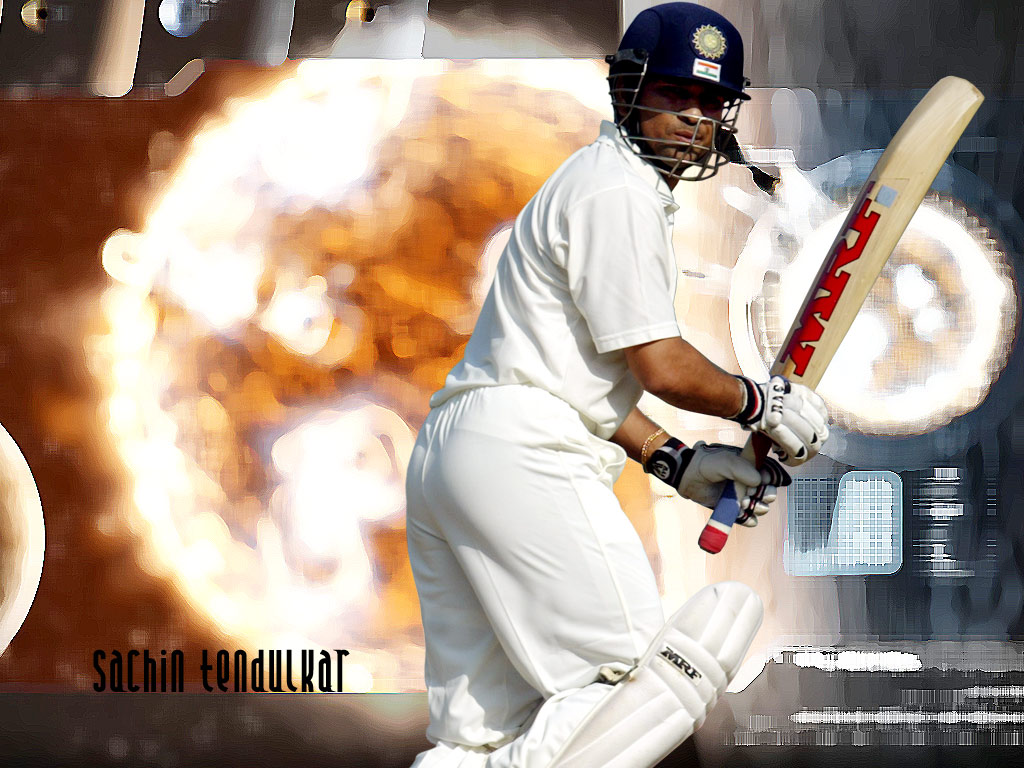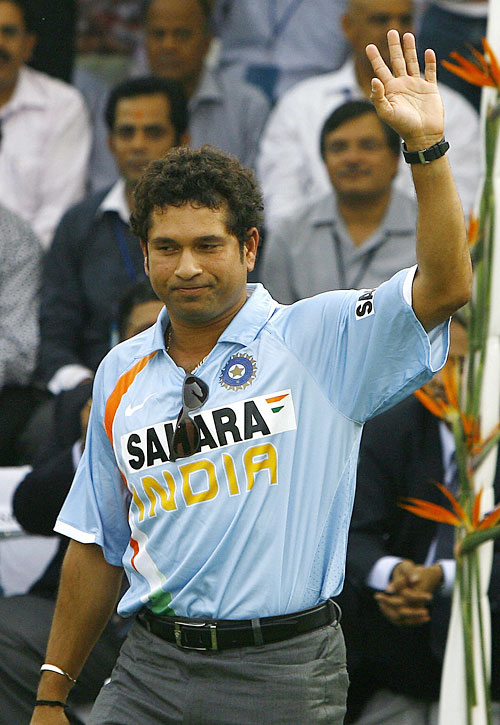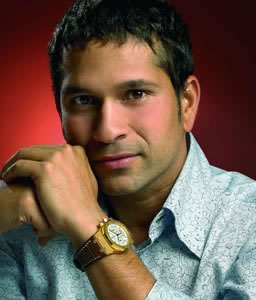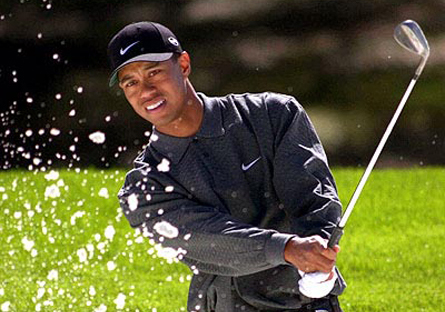Tendulkar is the first and the only player in Test Cricket history to score fifty centuries, and the first to score fifty centuries in all international cricket combined; he now has 97 centuries in international cricket. On 17 October 2008, when he surpassed Brian Lara's record for the most runs scored in Test cricket, he also became the first batsman to score 12,000, 13,000 and 14,000 runs in that form of the game, having also been the third batsman and first Indian to pass 11,000 runs in Test cricket. He was also the first player to score 10,000 runs in one-day internationals, and also the first player to cross every subsequent 1000-run mark that has been crossed in ODI cricket history and 200 runs in a one-day international match. In the fourth Test of the Border-Gavaskar Trophy against Australia, Tendulkar surpassed Australia's Allan Border to become the player to cross the 50-run mark the most number of times in Test cricket history, and also the second ever player to score 11 Test centuries against Australia, tying with Sir Jack Hobbs of England more than 70 years previously.Tendulkar passed 30,000 runs in international cricket on 20 November 2009. He also holds the world record for playing highest number of Test and ODI matches.Tendulkar has been honoured with the Padma Vibhushan award, India's second highest civilian award, and the Rajiv Gandhi Khel Ratna award, India's highest sporting honor. Tendulkar became the first sportsperson and the first personality without an aviation background to be awarded the honorary rank of Group Captain by the Indian Air Force.He has received honorary doctorates from Mysore University and Rajiv Gandhi University of Health Sciences He won the 2010 Sir Garfield Sobers Trophy for cricketer of the year at the ICC awards.
Contents
* 1 Early years and personal life
* 2 Philanthropy
* 3 Early domestic career
* 4 International career
o 4.1 Early career
o 4.2 Rise through the ranks
o 4.3 Captaincy
o 4.4 Injuries and apparent decline
o 4.5 Return to old form and consistency
o 4.6 2007/08 tour of Australia
o 4.7 Home series against South Africa
o 4.8 Sri Lanka Series
o 4.9 Return to form and breaking the record
o 4.10 ODI and Test Series against England
o 4.11 Sri Lanka ODIs
o 4.12 New Zealand Series
o 4.13 Compaq Cup in Sri Lanka
o 4.14 ICC Champions Trophy 2009
o 4.15 India-Australia ODI Series
o 4.16 Sri Lanka Series
o 4.17 Bangladesh Test Series
o 4.18 Series against South Africa in 2010
* 5 Indian Premier League
* 6 Style of play
* 7 Controversies
o 7.1 Mike Denness incident
o 7.2 Controversy over Ferrari customs waiver
* 8 Fan following
* 9 Business interests
o 9.1 Product and brand endorsements
* 10 Biographies
* 11 Career achievements
o 11.1 Individual honours and appreciations
* 12 See also
* 13 Notes
* 14 References
* 15 Further reading
* 16 External links
Early years and personal life
Tendulkar was born in Bombay (now Mumbai). His mother, Rajni, working in insurance, and his father, Ramesh Tendulkar, a Marathi novelist, named Tendulkar after his favourite music director, Sachin Dev Burman. Tendulkar's elder brother Ajit encouraged him to play cricket. Tendulkar has two other siblings: a brother Nitin, and sister Savita.
Tendulkar attended Sharadashram Vidyamandir (High School), where he began his cricketing career under the guidance of his coach and mentor, Ramakant Achrekar. During his school days he attended the MRF Pace Foundation to train as a fast bowler, but Australian fast bowler Dennis Lillee, who took a world record 355 Test wickets, was unimpressed, suggesting that Tendulkar focus on his batting instead.
When he was young, Tendulkar would practice for hours on end in the nets. If he became exhausted, Achrekar would put a one-Rupee-coin on the top of the stumps, and the bowler who dismissed Tendulkar would get the coin. If Tendulkar passed the whole session without getting dismissed, the coach would give him the coin. Tendulkar now considers the 13 coins he won then as some of his most prized possessions.
While at school, he developed a reputation as a child prodigy. He had become a common conversation point in Mumbai circles, where there were suggestions already that he would become one of the greats. His season in 1988 was extraordinary, with Tendulkar scoring a century in every innings he played. He was involved in an unbroken 664-run partnership in a Lord Harris Shield inter-school game in 1988 with friend and team mate Vinod Kambli, who would also go on to represent India. The destructive pair reduced one bowler to tears and made the rest of the opposition unwilling to continue the game. Tendulkar scored 326* in this innings and scored over a thousand runs in the tournament. This was a record partnership in any form of cricket until 2006, when it was broken by two under-13 batsmen in a match held at Hyderabad in India.
When he was 14, Indian batting legend Sunil Gavaskar gave him a pair of his own ultra light pads. "It was the greatest source of encouragement for me," he said nearly 20 years later after surpassing Gavaskar's world record of 34 Test centuries. On 24 May 1995, Sachin Tendulkar married Anjali, a paediatrician and daughter of Gujarati industrialist Anand Mehta and British social worker Annabel Mehta. They have two children, Sara (born 12 October 1997), and Arjun (born 24 September 1999).
 Sachin Tendulkar
Sachin Tendulkar Sachin Tendulkar
Sachin Tendulkar Sachin Tendulkar
Sachin Tendulkar Sachin Tendulkar
Sachin Tendulkar Sachin Tendulkar
Sachin Tendulkar Sachin Tendulkar
Sachin Tendulkar Sachin Tendulkar
Sachin Tendulkar Sachin Tendulkar
Sachin Tendulkar Sachin Tendulkar
Sachin Tendulkar Sachin Tendulkar
Sachin Tendulkar Sachin Tendulkar
Sachin Tendulkar Sachin Tendulkar
Sachin Tendulkar
Sachin Tendulkar








































